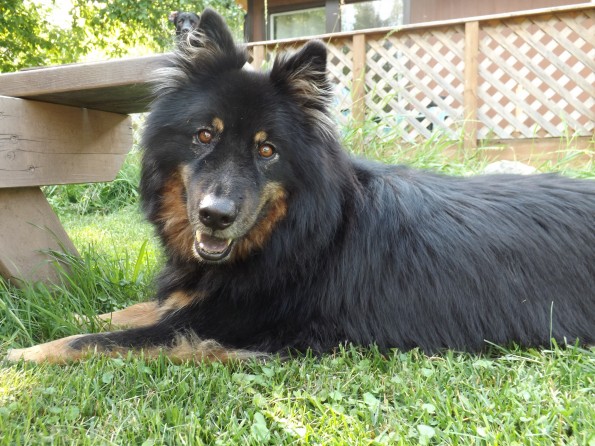
When a dog has an encounter with a porcupine, it usually ends with an emergency visit to our hospital. In all cases of dog versus porcupine, it is the dog whom is the “attacker”, and the prickly, little porcupine receives an unfair bad reputation.
Porcupines are vegetarians, and like to eat leaves, shrubs, berries, flowers, fruit and grasses. Porcupines are generally nocturnal animals, meaning they sleep during the day, and come out at night time to feed. The slow moving and interesting smelling porcupine easily attracts unwanted attention, often landing a curious dog into trouble. Although the porcupine may wave a threatening tail in response to danger, it cannot “shoot” quills at an unwanted visitor. Dogs, being as inquisitive as they are, will often sniff or bite a porcupine, resulting in quills stuck in their mouth, face, feet, or any other body part. In some cases, the dog may learn his lesson after the first sting of a quill in the nose; unfortunately others are often repeat offenders and never quite figure out to leave the porcupine alone!
Whether it’s a first offence or your dog is a veteran porcupine inspector, the sooner your dog receives veterinary care the better. If quills are left in place, they can migrate inwards with each movement of a dog’s muscles. This not only further embeds the quills under the skin, but it also increases the difficulty for removal and increases the likelihood of infection or other complications. We do not recommend that owners attempt to pull quills out at home, as there is a special technique and instrument used at the hospital to remove quills. Also, dogs often require sedation prior to removing quills as it is painful and they do not like to sit still for the procedure. Occasionally, we hear that owners have cut quills off at home using scissors; we absolutely discourage this as cutting quills makes it harder to properly remove them, and the hooked end of the quill still remains underneath the skin. Dogs may require pain medication and antibiotics after the quills have been removed.
Please refer to our website “Emergency Services” for more information on after-hours care for emergency situations such as encountering porcupine quills.
